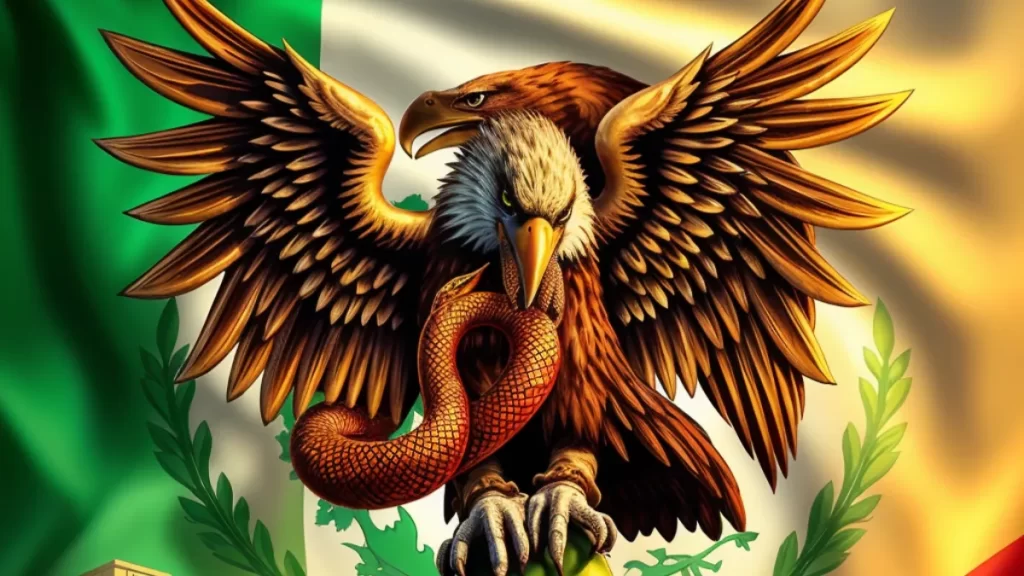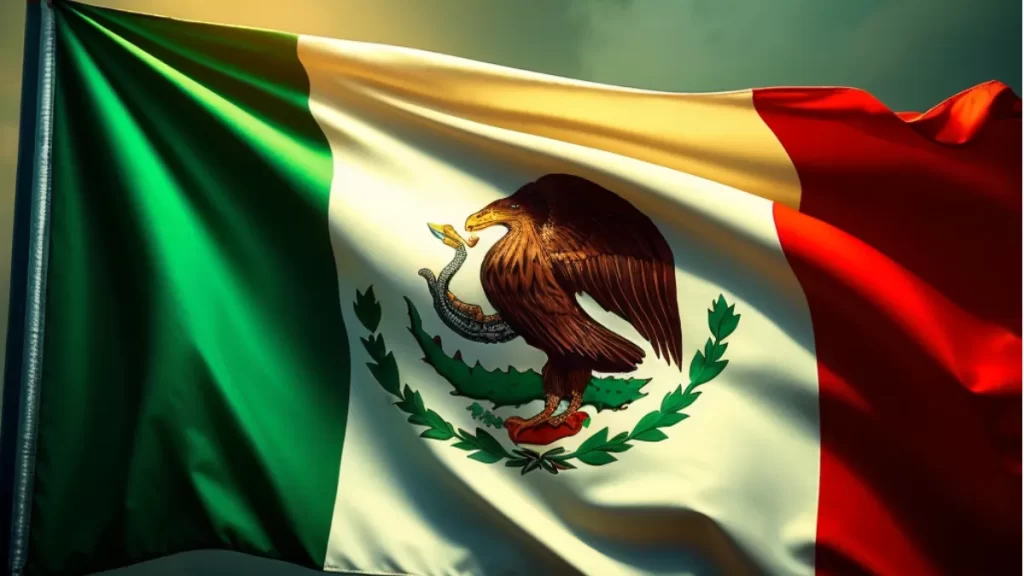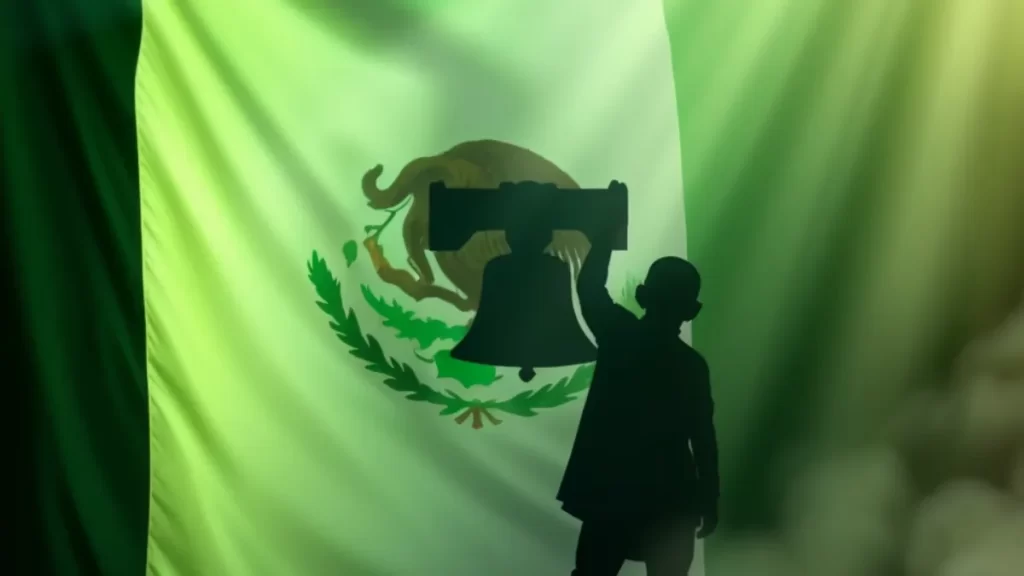The Mexico flag is more than just a national emblem; it’s a symbol of the country’s rich history and cultural identity. From its striking colours to its central emblem, each part of the flag tells a story of the nation’s journey to independence and unity. Understanding the meanings behind these symbols can deepen our appreciation for this significant flag and the heritage it represents.
The History of the Mexico Flag
The Birth of the Tricolor
In 1821, Mexico gained independence from Spain, marking the beginning of a new era. To symbolize this newfound freedom, the Mexico flag was created with a tricolour design—green, white, and red. These colours were chosen to represent different aspects of the nation’s identity and aspirations. Green symbolizes independence, white stands for the Roman Catholic faith, and red represents the union of the Mexican people and the blood of the heroes who fought for freedom.
Changes Over Time
The Mexico flag has undergone several changes over the years, particularly in its central emblem. Each alteration reflects the different political phases and regimes that have influenced the country’s history. For example, during the periods when Mexico was an empire, the eagle in the emblem was depicted with a crown. These changes help us understand how the flag has evolved alongside Mexico’s political landscape, maintaining its significance as a symbol of the nation’s identity.
The Colors of the Mexico Flag

The Color of Independence
The stripe on the Mexican flag represents the country’s independence from Spanish rule. This colour is a powerful reminder of the struggle and determination that led to Mexico’s freedom. It symbolizes the hope and aspirations of the Mexican people to govern themselves and build a nation based on their values and vision. A testament to the enduring spirit of independence that continues to inspire Mexicans today.
White: Symbol of Religion
White on the Mexico flag signifies the Roman Catholic religion, which has played a crucial role in shaping the country’s history and culture. This colour represents peace and purity, reflecting the importance of faith in the lives of many Mexicans. The inclusion of white in the flag underscores the significance of religion in uniting the people and fostering a sense of community and shared values. It is a symbol of the moral and spiritual foundation of the nation.
Red: Union and the Blood of Heroes
Red on the Mexico flag stands for the union of the Mexican people and the blood shed by those who fought for the country’s independence. This colour is a poignant reminder of the sacrifices made by countless individuals to achieve and maintain freedom. Red symbolizes the courage, strength, and unity of the Mexican people, who have come together to defend their nation and build a better future. It is a powerful representation of the shared history and collective identity of Mexico.
The Central Emblem of the Mexico Flag

The Eagle and the Snake
The central emblem of the Mexico flag features an eagle holding a snake in its beak while perched on a cactus. This image is deeply rooted in Aztec legend. According to the story, the gods told the Aztecs to build their city where they saw this sign. This emblem not only connects modern Mexico to its ancient roots but also symbolizes the resilience and strength of the Mexican people, who have overcome numerous challenges throughout their history.
The Importance of the Cactus and Rocks
The cactus and rocks in the emblem symbolize the challenges and resilience of the Mexican people. The cactus, growing out of rocks in the middle of the water, represents the ability to thrive even in difficult conditions. This imagery reflects the perseverance and determination of the Mexican people, who have faced and overcome many hardships. The emblem as a whole serves as a powerful reminder of the nation’s strength and ability to endure and flourish against all odds.
Also Read: Waterlil Wonders: Discover The Beauty Of Flowers and Secrets
The Evolution of the Emblem
Early Versions
In the early versions of the Mexico flag, the eagle was crowned, reflecting the country’s brief periods as an empire. These changes in the emblem’s design illustrate how the flag has adapted to Mexico’s evolving political landscape. Each version of the emblem tells a different story about the nation’s history and the various regimes that have shaped its identity. Understanding these changes helps us appreciate the flag’s current design and its significance.
Modern Emblem
The modern emblem, adopted in 1968, includes a wreath of oak and laurel around the eagle and snake. These additions represent strength and victory, completing the symbolic imagery of the flag. The oak symbolizes strength, and the laurel symbolizes victory, both of which are important qualities for a nation that has fought hard to achieve and maintain its independence. This current version of the emblem encapsulates the rich history and enduring spirit of the Mexican people.
The Significance of the Mexico Flag Today

National Pride
The Mexico flag is a source of national pride for Mexicans. It is displayed during important holidays and events, reminding citizens of their shared history and values. The flag serves as a unifying symbol, bringing together people from diverse backgrounds and fostering a sense of national identity. Whether flown at government buildings, schools, or homes, the flag is a constant reminder of the country’s journey and the principles it stands for.
International Symbol
Beyond its national significance, the Mexico flag is recognized worldwide as a symbol of the country’s rich cultural heritage and resilient spirit. It represents Mexico on the global stage, highlighting the nation’s contributions to art, culture, and history. The flag is a source of pride for Mexicans living abroad, serving as a connection to their homeland and a representation of their identity. It stands as a testament to the enduring legacy and influence of Mexico.
Closing Thoughts
The Mexico flag is not just a piece of fabric; it’s a powerful symbol of the nation’s identity, history, and values. From the tricolour design to the central emblem, every part of the flag has a deep meaning. Understanding these symbols helps us appreciate the flag and the country it represents. As we reflect on the Mexico flag, we remember the stories, struggles, and triumphs that have shaped this vibrant nation.
FAQs:
Q: What do the colours on the Mexican flag represent?
A: Green symbolizes independence, white represents the Roman Catholic religion, and red stands for the union and the blood of heroes who fought for Mexico’s freedom.
Q: What is the central emblem on the Mexican flag?
A: The central emblem features an eagle holding a snake in its beak while perched on a cactus, symbolizing an ancient Aztec legend.
Q: When was the current version of the Mexico flag adopted?
A: The current version of the Mexico flag was adopted on September 17, 1968, featuring a wreath of oak and laurel around the central emblem.




